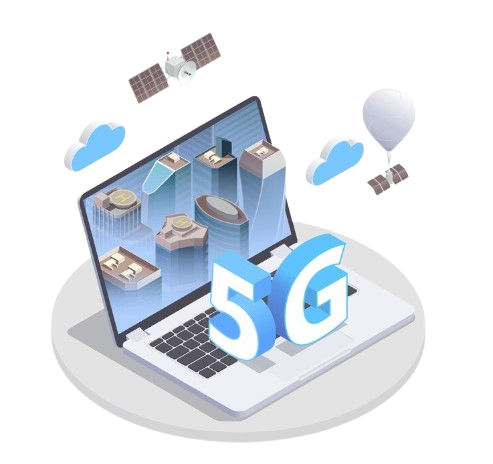The integration of 5G with IoT marks a significant technological leap forward, promising to unlock new levels of innovation and efficiency across multiple industries. As 5G continues to expand, its impact on IoT will only grow, leading to smarter cities, more responsive healthcare, and more efficient industrial operations.
The dawn of 5G technology is poised to revolutionize the world of connectivity, with far-reaching implications across various industries. Among the most transformative areas of impact is the Internet of Things (IoT). As 5G networks continue to roll out globally, they are set to supercharge IoT, bringing with it unprecedented speed, efficiency, and capabilities.
Understanding the Power of 5G
5G represents the fifth generation of mobile networks, offering significantly faster speeds, lower latency, and the ability to connect more devices simultaneously compared to its predecessors. These advancements are not just incremental improvements; they are a quantum leap that unlocks new possibilities for IoT, enabling devices to communicate and operate at an entirely new level.

The Impact of 5G on IoT
1. Increased Speed and Bandwidth
One of the most notable benefits of 5G is its remarkable speed. 5G networks can deliver data speeds that are up to 100 times faster than 4G LTE. This rapid transmission of data is crucial for IoT devices, which rely on quick and seamless communication to function effectively. Whether it’s a smart home device adjusting the thermostat or an autonomous vehicle navigating city streets, the increased speed of 5G ensures these processes occur in real time, enhancing the overall user experience.
2. Low Latency for Real-Time Applications
Latency, or the delay before a transfer of data begins following an instruction, has been a challenge for IoT applications requiring real-time responses. 5G drastically reduces latency, making near-instantaneous communication between devices possible. This low latency is particularly important for critical applications like remote surgery, autonomous driving, and industrial automation, where even a millisecond of delay can have significant consequences.
3. Massive Device Connectivity
As the number of IoT devices continues to surge, the need for networks that can handle this growth becomes increasingly critical. 5G excels in this regard, supporting a vastly larger number of connected devices per square kilometer than previous network generations. This capability is essential for the expansion of smart cities, where millions of sensors, cameras, and other IoT devices must work in harmony to manage everything from traffic flow to energy consumption.
4. Enhanced Reliability and Network Slicing
5G offers improved network reliability, ensuring consistent and dependable connections, which is crucial for IoT devices that perform critical tasks. Additionally, 5G introduces the concept of network slicing, which allows operators to create multiple virtual networks within a single physical 5G network. This means that IoT applications with different requirements can have dedicated slices of the network, optimizing performance and security.
5. Energy Efficiency and Battery Life
IoT devices are often battery-powered, and their efficiency is a key concern. 5G networks are designed to be more energy-efficient, reducing the power consumption of connected devices. This not only extends the battery life of IoT devices but also contributes to the overall sustainability of IoT ecosystems, making it more feasible to deploy devices in remote or hard-to-reach locations.
Use Cases: 5G-Enabled IoT Applications
-
Smart Cities
5G is the backbone of smart city initiatives, enabling the real-time management of resources and infrastructure. From intelligent traffic systems that reduce congestion to smart grids that optimize energy distribution, 5G-powered IoT solutions are at the heart of creating more sustainable and livable urban environments.
-
Healthcare
In healthcare, 5G facilitates advanced IoT applications such as remote patient monitoring, connected medical devices, and even remote surgeries. The combination of 5G and IoT is transforming healthcare delivery, making it more efficient, accessible, and responsive.
-
Industrial Automation
The industrial sector is leveraging 5G to enhance IoT-based automation, predictive maintenance, and supply chain management. 5G-enabled IoT devices in factories can communicate in real-time, which allows for more precise and efficient production processes. Consequently, this reduces downtime and improves overall operational efficiency.
Conclusion
The integration of 5G with IoT represents a major technological advancement. This combination promises to unlock new levels of innovation and efficiency in various industries. As 5G continues to expand, its influence on IoT will increase. This growth will lead to smarter cities, more responsive healthcare, and improved industrial operations.
At Tanbits, we offer IoT services to help businesses harness the power of 5G and IoT to drive growth and innovation.
The future of connectivity is here, and 5G is at the forefront of this revolution, enabling a world where the possibilities for IoT are truly limitless. The combination of these technologies will continue to redefine what is possible, creating a more connected, efficient, and responsive world.
BACK










